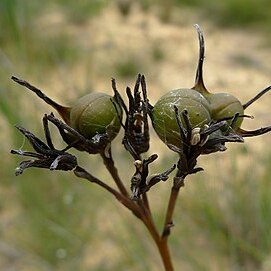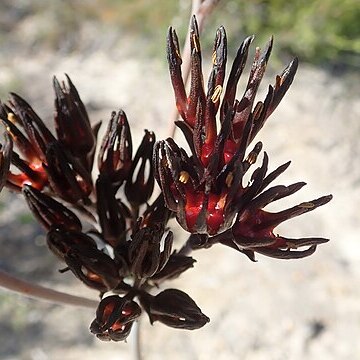Plant 40–75 cm tall. Basal leaves 3 or 4; lamina terete or compressed, 0.8–1.4 mm wide. Inflorescence paniculate; flowers concentrated terminally in 1–3 dense, corymbose clusters of several to many flowers; bracteoles opaque, black or brownish black, the veins obscure abaxially, the margins scarcely differentiated to relatively broad, brownish, membranous; upper bracteole acute or obtuse, reaching one fifth to halfway up flower. Flowers 12–15.5 mm long, brownish black or black. Sepals ¾ to almost as long as petals. Stamens equal; anthers versatile, borne above middle of petals, 3–4 mm long. Style at anthesis exceeding anther tips by 1–1.5 mm, shorter than petal tips by 1–2.5 mm.


